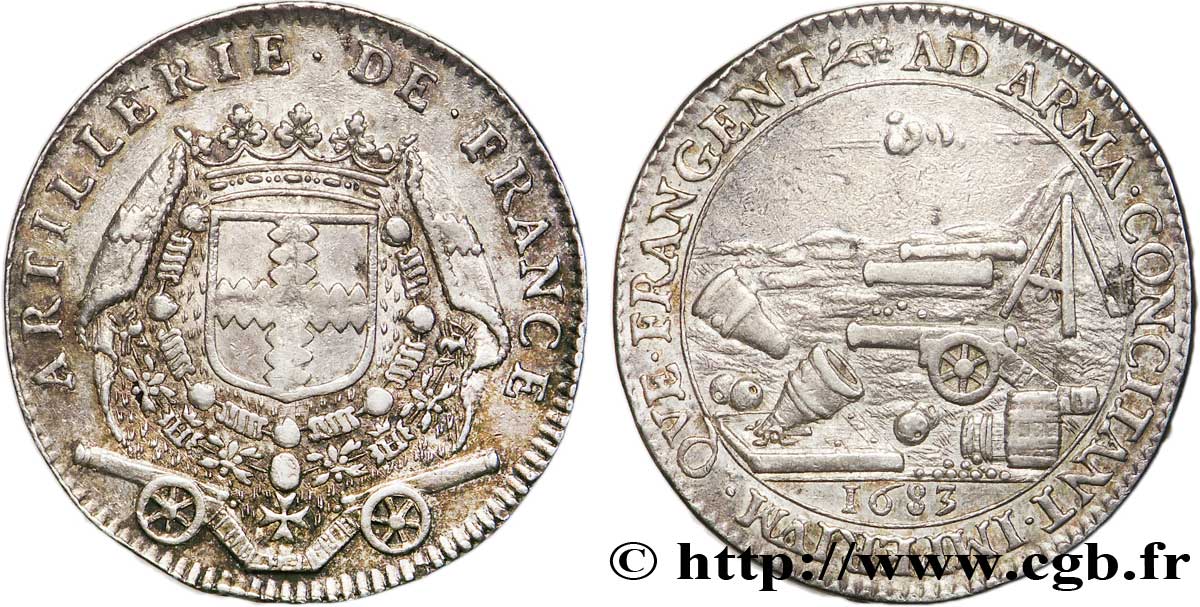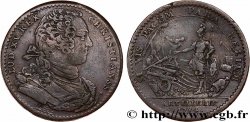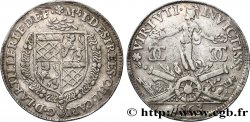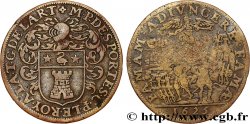fjt_116383 - ARTILLERY Henri de Daillon, comte du Lude 1683
140.00 €(Approx. 149.80$ | 120.40£)
Quantity
Add to your cart

Type : Henri de Daillon, comte du Lude
Date: 1683
Metal : silver
Diameter : 27,5 mm
Orientation dies : 6 h.
Edge : lisse
Rarity : R1
Coments on the condition:
Très bel exemplaire avec une légère patine
Catalogue references :
Obverse
Obverse legend : ARTILLERIE. DE. FRANCE.
Obverse description : Écu aux armes de Henri de Daillon, couronné et entouré des deux colliers des ordres, posé sur un manteau et au-dessus de deux canons affrontés.
Reverse
Reverse legend : (FLEUR) AD ARMA. CONCITANT. IMPERIVM. QVE. FRANGENT.
Reverse description : Sur le sol deux mortiers, dont l’un sur son affût, trois canons dont l’un sur son affût ; deux barils de poudre, des bombes, des boulets et un treuil ; à l'exergue : 1683.
Reverse translation : (Ils courent aux armes et fracassent l'empire).
Commentary
Henri de Daillon (ap.1622-1685) est comte du Lude, puis duc du Lude (1675) et Pair de France. Il est aussi marquis d'Illiers, baron de Briançon et seigneur de Pontgibault. Capitaine et Gouverneur de Saint-Germain, Premier Gentilhomme de la Chambre, il est depuis 1669 Grand Maître de l'Artillerie de France. Il épouse Renée de Bouillé, comtesse de Créance puis en secondes noces, le 6 février 1681, Marguerite de Béthune (1643-1726), fille de Maximilien François, second duc de Sully et de Charlotte Séguier, et veuve du Comte de la Guiche. En 1667, elle est dame d'honneur de la reine Marie-Thérèse puis en 1696, elle est nommée dame d'honneur de la duchesse de Bourgogne, Marie-Adélaïde de Savoie. Henri de Daillon porte d’azur, à la croix engrêlée d’or
Voir http://fr.wikipedia.org/wiki/Henry_de_Daillon .
Voir http://fr.wikipedia.org/wiki/Henry_de_Daillon .








 Report a mistake
Report a mistake Print the page
Print the page Share my selection
Share my selection Ask a question
Ask a question Consign / sell
Consign / sell
 Full data
Full data



